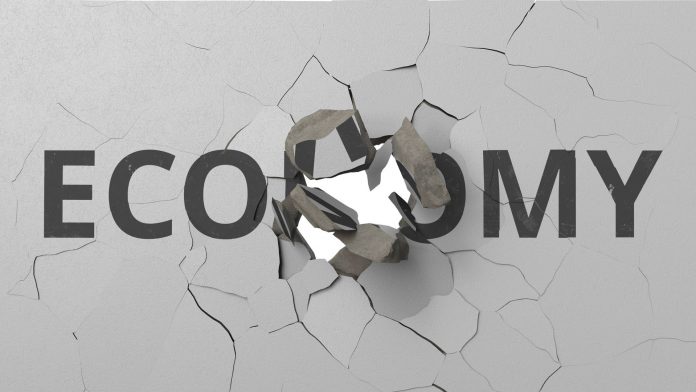Key Highlights
- March retail sales decreased -8.7%, the most ever according to government data
- Regional manufacturing in New York plummeted to a horrifying negative -78.2%
- Economic impacts from the coronavirus in early weeks of March were worse than expected
Take a look at what happened across the economy during the early weeks of the shutdown due to the coronavirus pandemic:
Download Your FREE Ultimate Agent Survival Guide Now. This is the exact ‘do this now’ info you need. Learn NOW How to Access All The Bailout Program Cash You Deserve. Including Unemployment and Mortgage Forbearance Plans. To Access the Ultimate Agent Survival Guide Now Text The Word SURVIVAL to 47372. 4 Msgs/Month. Reply STOP to cancel, HELP for help. Msg&data rates may apply. Terms & privacy: slkt.io/JWQt
- March retail sales experienced a record drop of -8.7%, the most ever according to government data, while sales at groceries and beverage stores increased +25.6%
- Regional manufacturing in New York hit an all-time low in March, down an eye-popping -78.2%
- Industrial production fell -5.4%, the most since 1946
- Manufacturing fell -6.3%
- Auto production dropped -28% as plants shuttered
- Car sales dropped -25.6%
- Furniture sales decreased -26.8%
- Restaurants and bars dropped -26.5%
- Clothing and accessory sales dropped an enormous -50.5%
Economists of all stripes anticipated losses during March once shutdown orders from states began to go into effect but no one anticipated losses this dire. And with things being this dire in March, just imagine what Q2 2020 will look like. Many experts are predicting a staggering drop of +30% in GDP for Q2 while economists at JPMorgan Chase are expecting a -40% decline in Q2 on top of the -10% drop in Q1.
Chris Rupkey, chief financial economist with MUGF Union Bank, minced no words. “The economy is clearly in ruins here.”
Ward McCarthy, chief financial economist at Jefferies Financial Group, said, “The bottom line is that consumer spending (representing 70% of the economy) has fallen off a cliff after being relatively solid for a prolonged period of time…the consumer sector will provide a drag on Q1 and Q2, but it’s going to be difficult to estimate the size of the drag.”
Jon Hill, senior Treasury strategist at Bank of Montreal Online Banking, expressed his concerns that such deep and sharp declines may signal an eminent depression despite the $2.2T Coronavirus Aid, Relief, and Economic Stress Act and the Federal Reserve’s unprecedented “sky’s the limit” approach to drive a rebound beginning in Q3. Hill said, “It’s really going to be not only a function of infections declining and whether there’s a vaccine, but how will the economy be able to reopen and how quickly, given the depth of the hit to the labor market (more than 22M jobless in just four weeks).
Adding to this economic nightmare were huge drops in equity markets, flattening trade in Treasury markets and expectations of inflation at 0.87% on average over the next five years.
Thanks to CNBC’s Patti Domm.
Also read: No Servicer Liquidity Coming But GSEs May Instigate Servicing Transfers, Your Auto Insurer Saving/Making Money Now; So Should You, Podcast: THE Scariest Questions You Need Answered Now | Real Estate Crash Coming?
























